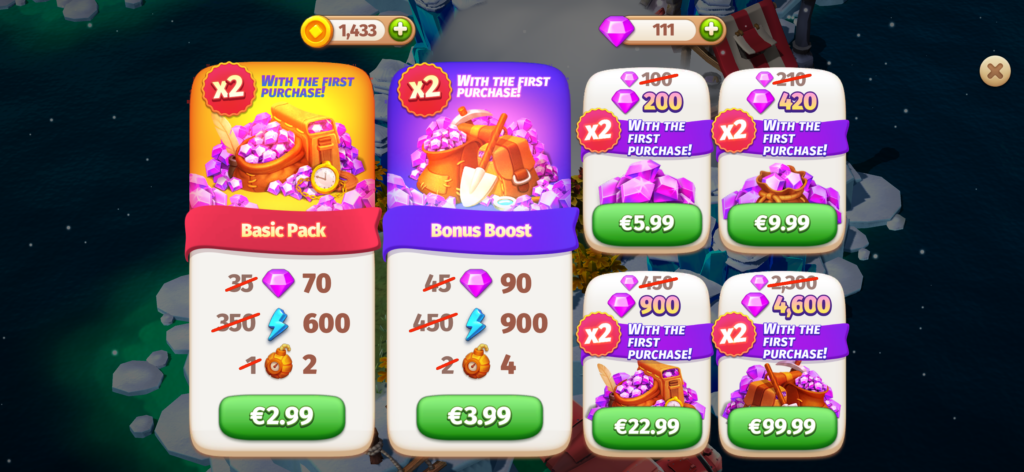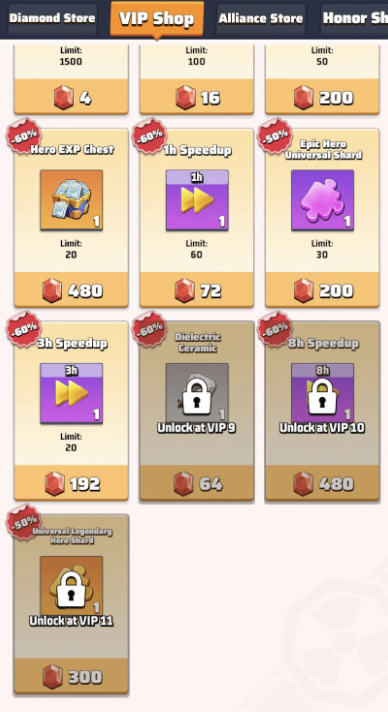Books: Balancy has released a guide titled "Best Practices for Working with In-Game Stores." We are publishing an excerpt
LiveOps expert at Balancy, Mikhail Khripin, has prepared a free guide on working with in-game stores. It's a 43-page document that thoroughly covers the elements and intricacies of setting up such stores. We are sharing an excerpt from the book in Russian, dedicated to increasing conversions.
Book: Best practices for in-game shops
Mikhail Khripin
Chapter 3. Working on Improving Conversion
After establishing the basic assortment of the game store, it is time to consider additional steps that can influence a user's purchasing decision. In this chapter, we will examine elements such as badges, discounts, bonuses, bundles, and limited offers that impact sales. When used correctly, all of these positively affect conversion.
3.1 Badges (also known as labels or tags)
Each type of badge—whether "best value" or "discount"—draws players' attention. The key is to use these visual cues strategically and ethically. Badges should guide and inform players, not mislead or overwhelm them.
Screen clutter from too many badges can create visual chaos and diminish the effectiveness of the information being conveyed. Additionally, while rounding percentage discounts for appeal is common practice (e.g., listing 50% instead of 49.26%), honesty and transparency should always remain fundamental principles. Do not advertise a 50% discount if the actual discount is much closer to 40%.
Love&Pies (Trailmix): developer uses badges to attract attention to the most expensive bundles in the shop
Let's explore the different types of badges:
- "Best value" can be placed on items where the best offer can be easily verified through mathematical calculations (e.g., a $99.99 bundle in Love&Pies—see the image above), but not only in such cases. This badge works well with resources or cosmetic items where pricing is subjective. Players are drawn to items marked as offering the greatest value, even if the actual value is hard to measure. Just aim to apply the "Best value" badge in a way that appears authentic.
- Players often seek guidance or approval when making purchases. The "Recommended" badge serves this purpose, suggesting an item as a sensible choice due to its utility, popularity, or alignment with the player's progression. The criteria for selecting items to be labeled as "Recommended" may vary. As an experiment, you might highlight an item that actually has low sales.
- "Most popular" leverages the principle of social proof. This badge can encourage players to purchase items simply because others are doing so. However, be mindful of the power of the community: players might organize a survey to find out whether the item is truly as popular as the developers claim.
- The "Limited" badge should be used for items available in limited quantities. Combined with a real-time counter showing how many items are left, this label can create a sense of urgency and scarcity, prompting quicker purchasing decisions.
- The badge with the text "Discount" or displaying the discount amount is appealing to everyone. The psychology here is simple: everyone loves a good deal. Just try to be consistent when calculating numbers, as players can easily compare offers and check the math.
- Similar to discounts, "Bonuses" add value to a purchase for players. A commonly used conversion tactic is offering a one-time bonus for the first purchase of each item or bundle (e.g., "buy 1, get 2" or "get X% extra"). This approach can increase conversion for first-time buyers and encourage exploration of various bundle sizes.
Fablewood (Guli Games): offering a double bonus for the first purchase of each bundle
3.2 Bundles
Bundles are sets of items sold together at a reduced price. They capitalize on the psychological appeal of getting more for less and the convenience of buying everything needed in one place. In recent years, in-game bundles have evolved from a few basic sets to complex, personalized offers that cater to specific player needs and preferences.
Each bundle typically consists of two types of items: cornerstone and filler. Cornerstone items are the primary reason for the purchase—they are the items players greatly desire, offer high value, and/or are exclusive. Filler items, while less valuable on their own, provide additional incentive to purchase the bundle by increasing its perceived value.
Family Tree (Lion Studios): the main item of the No Ads bundle is complemented by filler items (coins and boosters)
To determine cornerstone items for a bundle:
- Look at the popularity and desirability of items in the game. Great cornerstone items are those that are in high demand because they provide significant in-game advantages or are aesthetically appealing (e.g., rare skins or powerful weapons).
- Consider items that are exclusive or not easily obtainable through regular gameplay. These might include limited-time items, gear tied to specific events, or items typically acquired only by reaching high levels.
- Try to sell items that players keep forever (as opposed to consumables). Many players view their gaming experience as an investment, and permanent items will psychologically justify their purchase.
Filler items complement the cornerstone item and bolster the bundle’s appeal. When choosing filler items:
- Select items that meet player needs and complement the cornerstone item. For example, if the cornerstone item is a character skin, suitable fillers could be matching accessories or in-game currency.
- Choose filler items that enhance the effectiveness of the cornerstone item. For example, if the cornerstone item is a powerful weapon, fillers could be ammo or upgrades for it.
- Ensure that filler items are valuable. Each item should have its own value and not just be included to inflate the count of items in the set. Avoid items that the player has in excess.
The combination of cornerstone and additional items should make sense both in terms of gameplay and value. Here are some key recommendations:
- Maintain a coherent theme and focus within the bundle. If the cornerstone item is part of a specific game storyline or event, filler items should relate to this theme.
- Ensure that the perceived value of the bundle as a whole exceeds the sum of the individual item values. Additional value arises from how thoughtfully the items are assembled into a set.
- Consider different player segments when crafting bundles. For instance, newcomers may prefer bundles with items that help them start the game, while veteran players might be more interested in exclusive or elite items.
The number of items in a bundle should be such that making a purchase decision is as simple as possible. The more options players have to consider and calculations they have to make, the higher the cognitive load. If players have to spend time figuring out the value, the bundle is too complex.
The concept of a "bundle" implies that you include various items. However, a wide variety does not always mean a high perceived value. There is a point of diminishing returns when adding more items no longer enhances perceived value.
Lastly, it's vital to test different combinations of cornerstone and filler items and gather player feedback. This can be done through limited-time offers, A/B testing, surveys, and analyzing payment behavior patterns and purchase habits. Understanding player preferences and behavior will help refine offers to better match player interests and enhance their appeal.
3.3 Limited Offers
Introducing restrictions on items and bundles in stores is a popular strategy for boosting sales. Time- and quantity-limited offers create urgency and scarcity, while access-limited offers motivate player progress and engagement. Game developers can create a more dynamic and engaging gameplay experience by strategically embedding these restrictions in the store.
Time-limited offers generate a sense of urgency, encouraging players to make a purchase quickly before the offer expires. This psychological trigger—the fear of missing out (FOMO)—can significantly boost purchase conversion.
The general recommendation is to clearly indicate offer expiration and use countdown timers to enhance the sense of urgency. To increase the relevance and appeal of the offer, time-limited offers can be linked to calendar events, seasons, or storyline phases.
Quantity-limited offers of bundles or items create a sense of scarcity, making the offer more attractive. Additionally, players are even more likely to make a purchase if they know that only a limited number of players can own that item or set.
Display a real-time counter showing how many items or bundles are left. To maintain player trust, ensure that the scarcity is real and not just a marketing gimmick.
Frozen City (Century Games): limits on the number of items available for purchase daily in the store
Limiting access to items and bundles based on player level, content progress, player status, or achievements creates personalized incentives. This encourages players to advance further in the game to unlock more enticing offers.
Last War (First Fun): access to store items is limited, encouraging players to reach the next VIP level
It is always beneficial to tailor offers for different player segments based on their gameplay history. For example, new players want offers that help them catch up faster and compare with veterans, while veteran players would be interested in obtaining access to exclusive high-tier items. Such a targeted approach makes offers more relevant and attractive to each player segment.
The full version of the book in English is available here.






